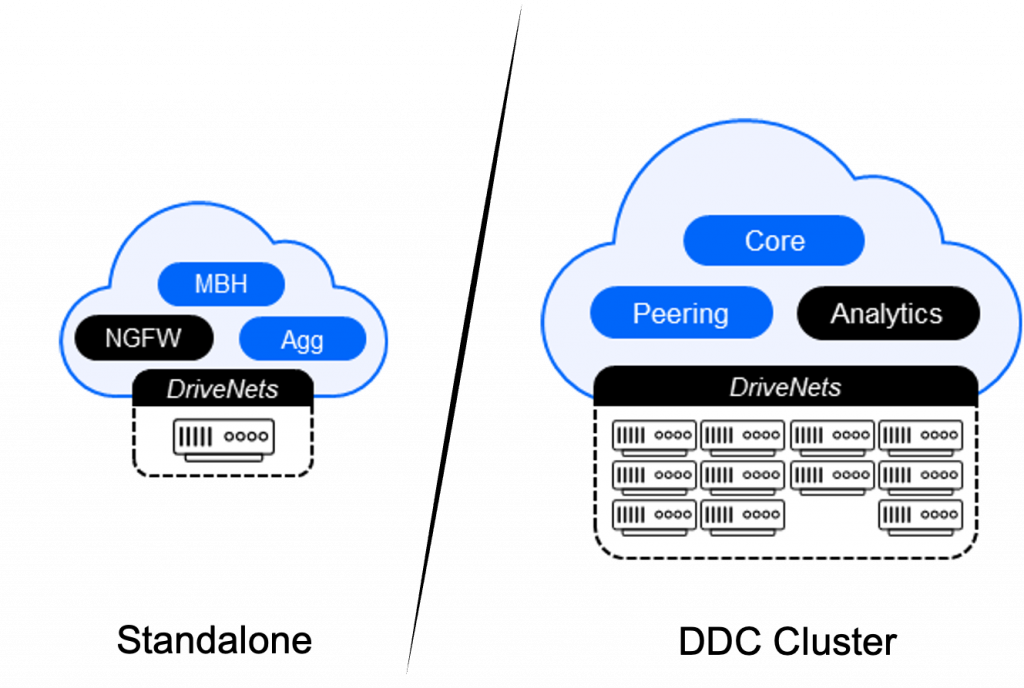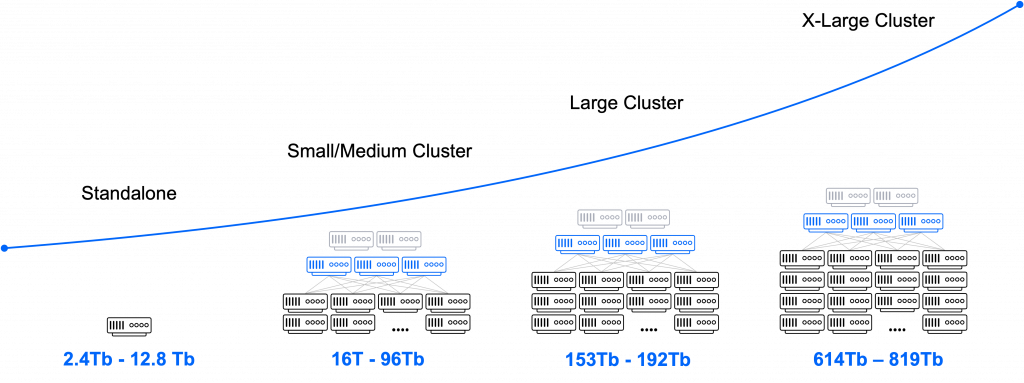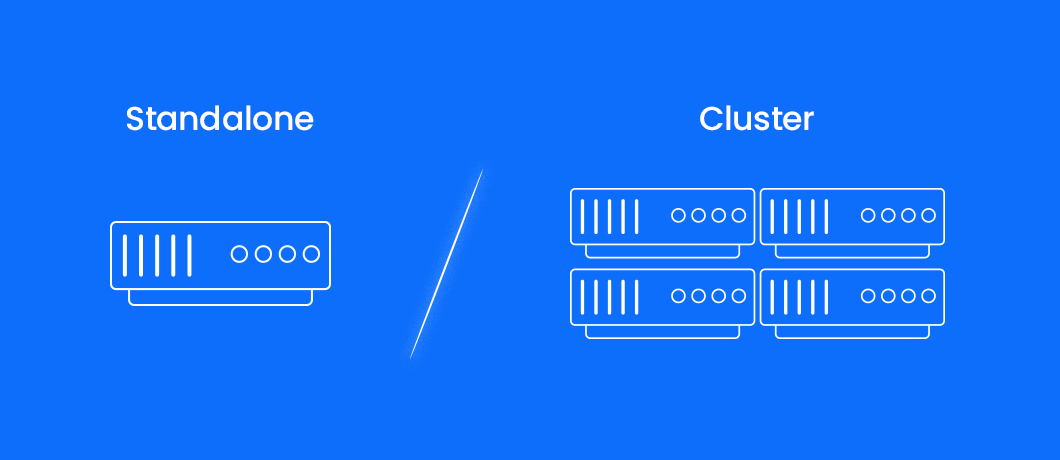| Getting your Trinity Audio player ready... |
In a white box cluster, there are two main types of building blocks – the packet forwarder white box and the fabric white box. Those building blocks are connected with a cell-based interface and can scale and scale, practically to infinity. (There’s also a control plane function on a separate server, cables, management switches, and so on.)
In a standalone white box, however, there is only a single white box. Functionality-wise, it has the same capabilities, but in a much more compact, less complex, but less scalable form factor.
When should you use a standalone box for your network architecture?
The short answer is whenever you can.
Standalone white boxes are simpler than clusters as they are, well, standalone. Just a single box, less power consumption, less space, less cables – less headaches. 
If the overall capacity and the port fanout are adequate for what you need today, and, more importantly, what you expect to need in the foreseeable future, go with a standalone box. This would mostly be the case in edge, metro-edge, peering and some aggregation use cases. In some cases, a standalone box can even work for core sites, as you now have options that range from a 2.4Tbps box (with 1, 10, 25, 100 and 400Gbps interfaces) to a 12.8Tbps box (with 400Gbps interfaces).
Even if your capacity or fanout requirements are larger than those offered by a single box, you might want to choose a network architecture based on planes, rather than move to a cluster formation. We will discuss this architecture in future blog posts.
The more interesting question is when shouldn’t you use a standalone configuration? Or…
When should you use a cluster for your network architecture?
Despite the catchy “standalone when you can, cluster when you must” slogan, you should consider the following issues to determine if a cluster is indeed a must for you:
- Future (or current) capacity: The main advantage of a cluster configuration is capacity. While a standalone box can reach an impressive 12.4Tbps in a 2 rack-unit box, it is nowhere near the capacity of a cluster, which can scale out to over 800Tbps. This is more than enough for any service provider’s core site on earth (if you think otherwise, please leave a comment…).
- Future (or current) fanout: Consider the number of ports you need of each type (1-400Gbps and soon 800Gbps). If you expect to need more ports of a certain speed than your standalone box can provide, or you want to avoid using breakout cables, go with a cluster.
- Additional redundancy / higher availability: While you can achieve some level of redundancy in a standalone configuration, if your site requires no SPOF (single point of failure) availability, you should go with a cluster configuration.
- Future-proof upgrade: Even if all of the above point towards a standalone configuration, you might be tired of replacing boxes every few years and want a smoother network evolution path in the future. Indeed, a cluster might provide you with an easier evolution path – instead of a rip-and-replace process, you can go with a gradual evolution of your hardware anytime in the future.

The bottom line for your network architecture
The bottom line is that the choice is, basically, up to you.
As long as you consider all the aspects and variables, you cannot go wrong. Selecting between standalone and cluster configurations is based on understanding tradeoffs such as simplicity vs. flexibility and picking the right balance for your needs.
Also, you can change your mind at anytime. White boxes are usually the same for standalone and cluster configurations. As a result, you can change configurations whenever requirements change – you can reuse a standalone box in a cluster formation, or spin a white box off a cluster and use it as a standalone box.
Download White Paper
Edge Networking Solution for Service Providers




